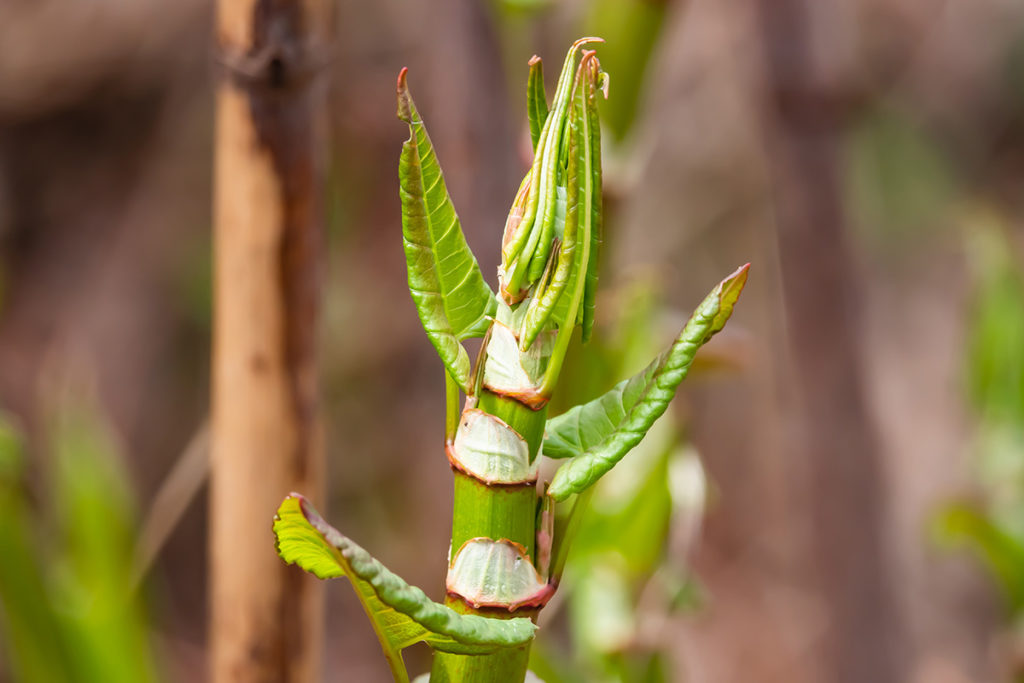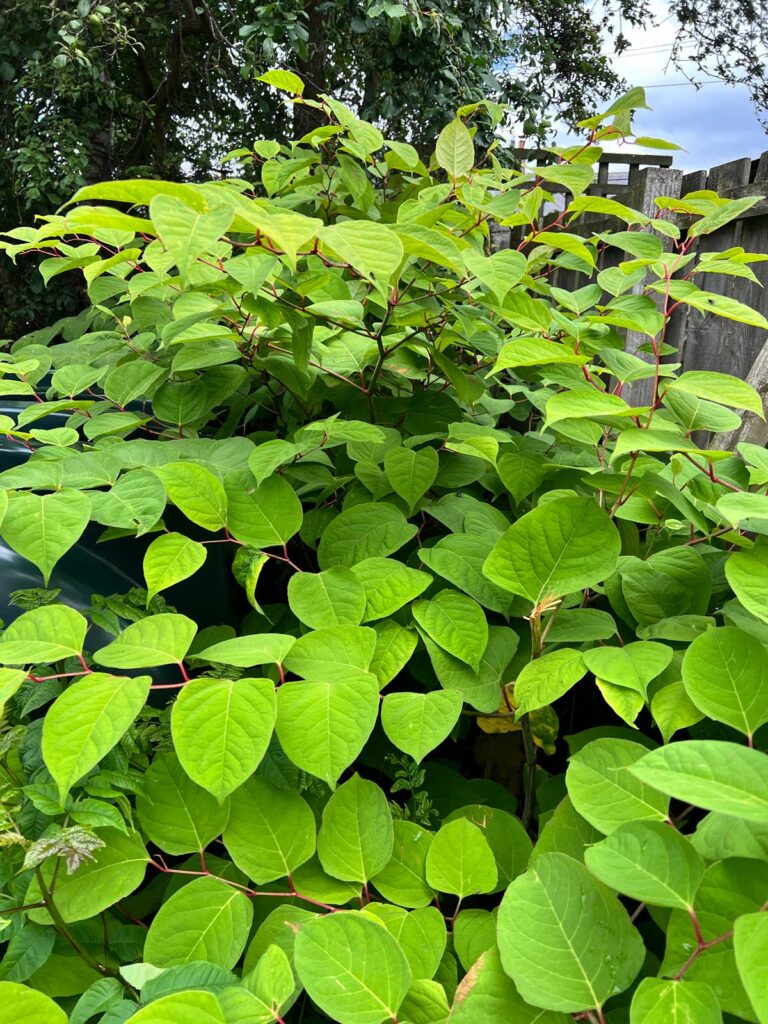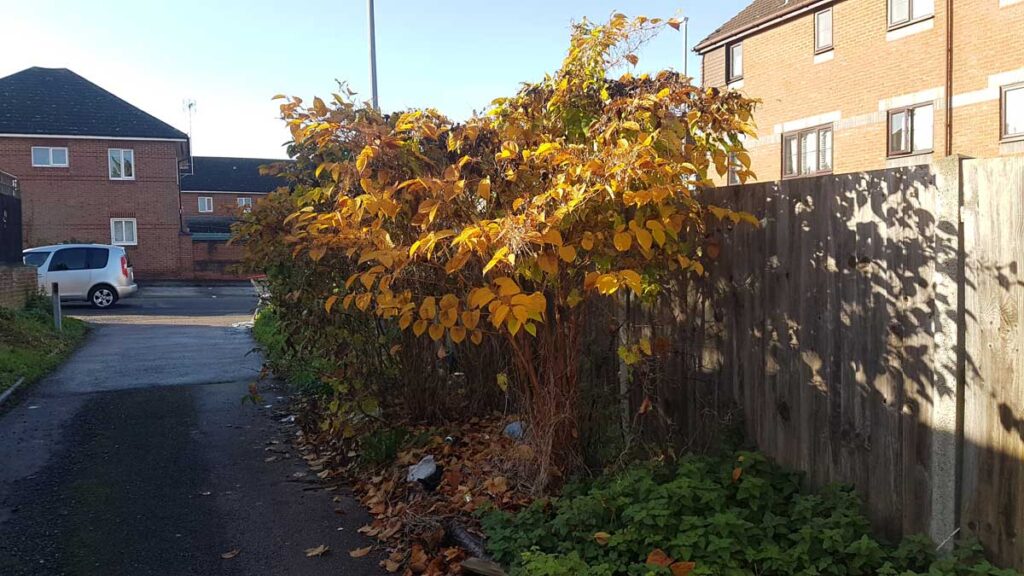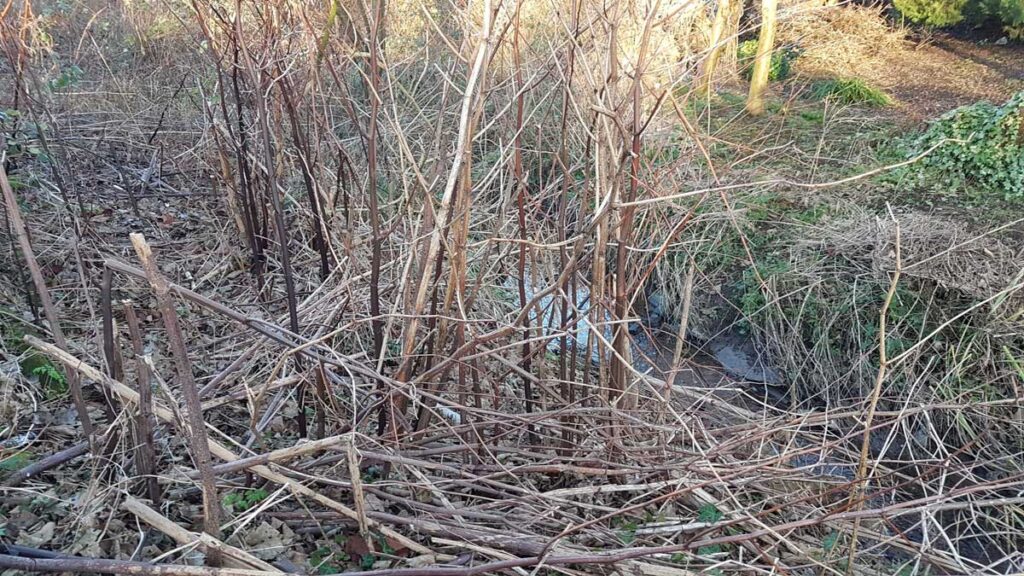As someone once said – know your enemy. And Japanese Knotweed certainly isn’t your friend. So the first step is correctly identifying it.
What is Japanese Knotweed?
Japanese Knotweed is a fast-growing perennial plant that can grow at an alarming rate, in many cases as much as 10cm a day. It is no respecter of boundaries or ecology, so it needs to be addressed at the earliest opportunity.
It spreads by root systems (known as rhizomes) being disturbed and moved – and you might not even know you’re doing that, as the active elements are so small. In fact, as little as 0.7 grams (less than the size of your fingernail) is all that’s needed for a new infestation of Japanese Knotweed to develop on your land.
How to Identify Japanese Knotweed
If you have spotted something that you think suspiciously looks like Japanese Knotweed then you’ve come to the right place, and we are here to help by providing a free identification service where you can easily send your photographs for instant identification by our expert team.
So here we go with some identification tips to help you correctly recognise Japanese Knotweed through its various stages of growth:
Japanese Knotweed through the Spring
Japanese Knotweed is a highly invasive plant species that can grow rapidly and cause damage to surrounding vegetation, as well as structures such as buildings and roads.
In the spring, the plant begins to emerge from its dormant winter state and begins to grow rapidly at up to 10cm per day.
Japanese Knotweed has distinctive green and red shoots that emerge in the spring. The shoots are hollow and have a characteristic zig-zag pattern. As the plant grows, it produces large, heart-shaped leaves that are arranged in a fan-like pattern.


Japanese Knotweed through the Summer
During the summer, Japanese Knotweed continues to grow and can spread extremely quickly if left unchecked.
It is in these summer months that the plant produces small white or cream-colored flowers that grow in clusters at the end of the stems.
Japanese Knotweed can grow up to 3 meters tall and has broad green leaves that are arranged in a zigzag pattern on the stem.
Japanese Knotweed through the Autumn
As we head into the autumn months the plant will begin to die back and the leaves will begin to turn yellow and wilt, as the rhizomes pull all the remaining nutrients from the above soil growth ready to go into a state of dormancy through the winter months.
Remember, controlling Japanese Knotweed requires persistence and vigilance.
By taking action to prevent its spread and promptly addressing any infestations, you can help protect the environment and infrastructure from the damaging effects of this invasive plant.


Japanese Knotweed through the Winter
In winter, Japanese Knotweed becomes dormant and dies back to the ground, leaving only dry, brown stems.
These stems are woody and bamboo-like and are also hollow with distinct raised nodes, retaining their characteristic zigzag shape.
It’s important to note that while Japanese Knotweed may not appear to be actively growing in winter, it will re-emerge through the spring as the plant is a perennial – so don’t be fooled into thinking the problem has gone away!
Why is Japanese Knotweed a Problem?
Japanese Knotweed can grow through foundations exploiting existing defects, which ultimately leads to a reduction in their value – no ifs or buts. Its aggressive nature means it creates its own monoculture, pushing out native species by reducing localised biodiversity.
As a result, lenders will typically refuse to engage with a property that has an infestation of Japanese Knotweed – unless an effective management programme is in place, and one that includes an Insurance Backed Guarantee.
Thankfully, that’s where we come in – so call our experts today.











